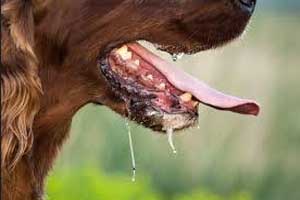- Home
- Editorial
- News
- Practice Guidelines
- Anesthesiology Guidelines
- Cancer Guidelines
- Cardiac Sciences Guidelines
- Critical Care Guidelines
- Dentistry Guidelines
- Dermatology Guidelines
- Diabetes and Endo Guidelines
- Diagnostics Guidelines
- ENT Guidelines
- Featured Practice Guidelines
- Gastroenterology Guidelines
- Geriatrics Guidelines
- Medicine Guidelines
- Nephrology Guidelines
- Neurosciences Guidelines
- Obs and Gynae Guidelines
- Ophthalmology Guidelines
- Orthopaedics Guidelines
- Paediatrics Guidelines
- Psychiatry Guidelines
- Pulmonology Guidelines
- Radiology Guidelines
- Surgery Guidelines
- Urology Guidelines
Dog licking turns fatal- German man dies of a rare infection

The case report -- Being Licked by a Dog Can Be Fatal: Capnocytophaga canimorsus Sepsis with Purpura Fulminans in an Immunocompetent Man is published in the European Journal of Case Reports in Internal Medicine.
DOI: 10.12890/2019_001268
bacterial infectionCapnocytophaga canimorsusdog lickingEuropean Journal of Case Reports in Internal Medicineimmunocompetentpurpura fulminanssepsis
Source : European Journal of Case Reports in Internal MedicineNext Story
NO DATA FOUND

Disclaimer: This site is primarily intended for healthcare professionals. Any content/information on this website does not replace the advice of medical and/or health professionals and should not be construed as medical/diagnostic advice/endorsement or prescription. Use of this site is subject to our terms of use, privacy policy, advertisement policy. © 2020 Minerva Medical Treatment Pvt Ltd